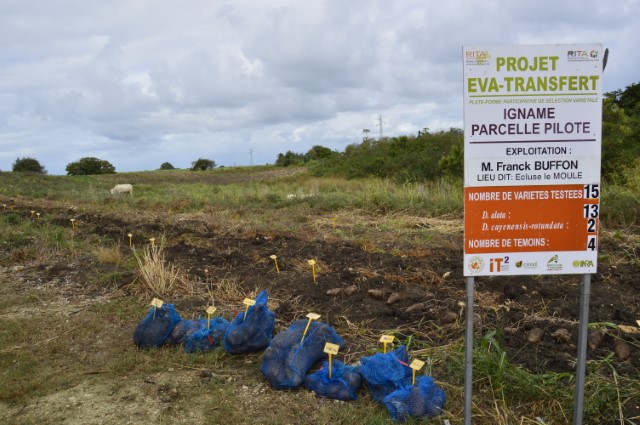In Guadeloupe, the local authorities wish to preserve the local yam production, despite the strong competition from the imported yams from Central America and Costa Rica. There are two main problems in achieving this goal: firstly, the difficulty of dealing with outbreak of the disease anthracnose and secondly the lack of a farmers’ organization in the yam sector.
The Outbreak of Anthracnose
As a response to the outbreak of anthracnose disease in the 70s, two independent yam breeding programs were launched by INRA and CIRAD to create anthracnose-resistant varieties. These breeding programs have resulted in new resistant yam varieties that have been adapted and evolved over the years upon the recurrent anthracnose crisis.
Currently, 40 yam varieties are grown and each farmer usually cultivates several varieties. It has become a common practice for farmers to use vegetative multiplication for replanting. But this practice fosters a high level of anthracnose pressure (and other diseases).
“We want to reach a Yam variety which resists the anthracnose, but also a variety of white color and very firm yam that consumers ask of us today “. (Franck BUFFON – Farmer)
The Yam Farmers Are Not Organized
Since 2011, RITA (Réseau d’Innovation et de Transfert Agricole dans les DOM) has supported the innovation dynamics, especially through facilitating and supporting the creation of a multi-stakeholder varietal breeding program and an evaluation platform.
The collaboration between the organizations ACTA and CIRAD, IT2 and the Chamber of Agriculture will lead to the implementation and monitoring of a collective breeding program. In this way, new anthracnose-resistant yam varieties will be developed by research organizations and will be adapted to farmers’ needs thanks to the technical Institute IT2 and the Chamber of Agriculture.
Several extension flyers and technical meetings will also be used to spread the results of the program.
“The yield, it is what interests our farmers.” (Patrice CHAMPOISEAU – Responsible for culture diversification at IT2)
The French Cross Visit
Read more about the French Cross Visit.
Watch the Videos
Watch the video about RITA, an agricultural innovation and transfer network


Leave A Comment